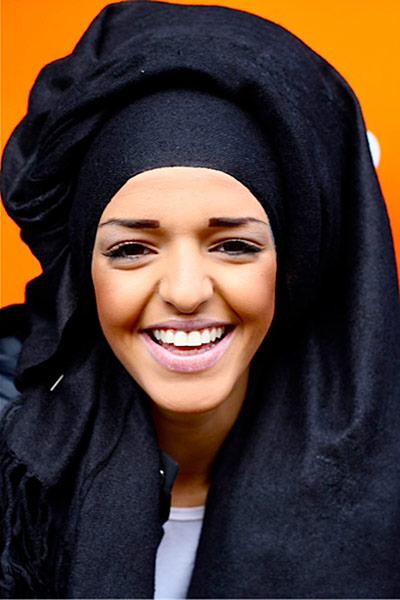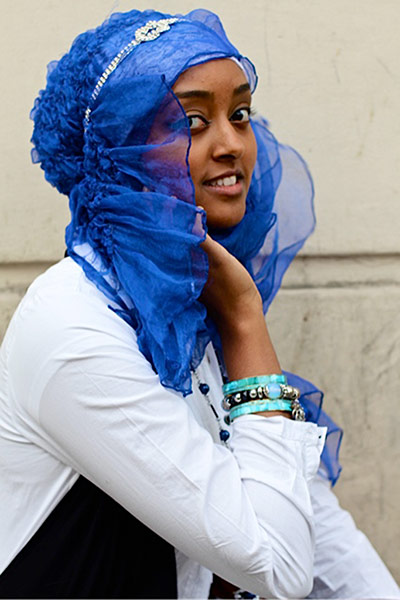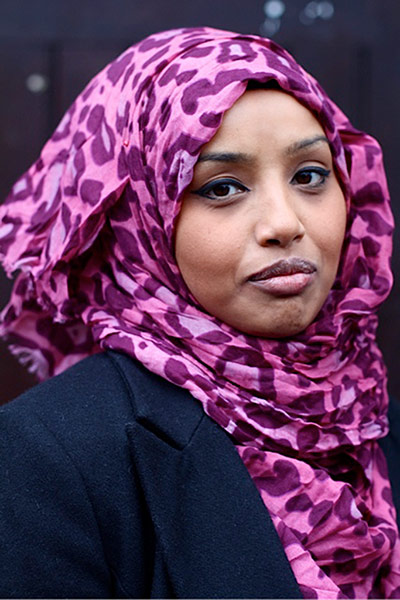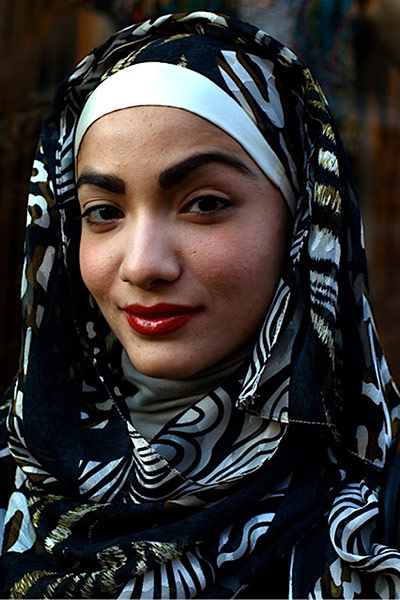I am so pleased that is far from what I would have predicted for my first post befitting of the 'Fashion & Style' header. Watching BBC breakfast this morning, as I do nearly every day, I saw this feature on an exhibition of the work by the artist Sara Shamsavari, at London's Festival Hall.
The exhibition is lifting the veil on the wearing of the hijab. Through Sara's beautiful photos of London based Muslim girls, it highlights just how much sense of fashion and style is enwrapped in the wearing of the hijab. This article on my go-to favourite site for arts and culture, The Guardian website, explains how the fashion varies so much across different areas of the city too.
"In Marble Arch, there is this fashion for looking as expensive as you can, whereas in Whitechapel it was all about creativity – the young women may not have been wearing designer clothes but they had an attitude of 'we know how to put it together'."
"In Marble Arch, there is this fashion for looking as expensive as you can, whereas in Whitechapel it was all about creativity – the young women may not have been wearing designer clothes but they had an attitude of 'we know how to put it together'."
So, the hijab can be highly fashionable? You can't really shock me with this fact. I lived for five years in Leeds, in the 'Hyde Park' area, where every house not populated by students has an Asian family, mainly Muslim. Then, for several years in Manchester I commuted daily through 'Curry Mile' in Rushholme, Manchester. Such a vibrant place, where the trade in ethnic fashion I'm sure must equal that in ethnic foods. I found both such inspiring communities to live in. Aside from fabulous ethnic food stores, there were many shops with wonderful displays of ethnic fashion. Young, fashionable people of all ethnicities would often march up and down the streets with their own serious city style moulded (sometimes but not always) to fit in with their personal beliefs and religions.
I really miss the multiculturalism of city life now, having moved back to a place seriously lacking in difference. In an area with a large, almost 100% white elderly population, there's not a lot of room for anything to make you stand out from the ordinary. This is a place where (sometimes shockingly not-so-old) ladies still come and ask me for trousers in 'N**ger Brown' and tell me how 'the coloured man in the post office is actually really nice'. Yet just down the road in Preston there's thriving communities of all kinds of ethnicities and cultures bubbling along quite happily side-by-side. Despite growing up in such a conservative (with both a big and little 'C') area I've always tried to be someone with an attitude freely open to learning from other cultures and celebrating every point of difference for what it can bring. I would hope to teach my children to be absolutely the same.
Even despite my open mind, I hope I could be forgiven for having previously been a little confused and certainly a lot inquisitive about the different types of Muslim headgear. I knew they weren't all 'hijab' and neither were they all 'burkas' but that was as far as my knowledge stretched. Until I read this guide from the good old beeb website a few years ago. Let's clarify things...
"The word hijab comes from the Arabic for veil and is used to describe the headscarves worn by Muslim women.
These scarves, regarded by many Muslims as a symbol of both religion and womanhood, come in a myriad of styles and colours.
The type most commonly worn in the West is a square scarf that covers the head and neck but leaves the face clear."*
"Conservative choice
The niqab is a veil for the face that leaves the area around the eyes clear. However, it may be worn with a separate eye veil. It is worn with an accompanying headscarf.
The burka is the most concealing of all Islamic veils. It covers the entire face and body, leaving just a mesh screen to see through.
There have been attempts to ban both the niqab and burka in some European countries."*
The al-amira is a two-piece veil. It consists of a close fitting cap, usually made from cotton or polyester, and an accompanying tube-like scarf.
The shayla is a long, rectangular scarf popular in the Gulf region. It is wrapped around the head and tucked or pinned in place at the shoulders."*
"Covering up
The khimar is a long, cape-like veil that hangs down to just above the waist. It covers the hair, neck and shoulders completely, but leaves the face clear.
The chador, worn by many Iranian women when outside the house, is a full-body cloak. It is often accompanied by a smaller headscarf underneath."*
, http://news.bbc.co.uk/1/shared/spl/hi/pop_ups/05/europe_muslim_veils/html/4.stm
Of course, the debate on wearing of the burka and other Muslim headwear is complex and emotive territory, which I really do not want to enter in to. I know it's particularly topical in France at the moment.
But, this has really got me thinking - the city girls in Sara Shamsavari's exhibition, wearing their hijab's with their own fabulous senses of style, are celebrating themselves and revelling in their own sense of identity far, far more than the identikit girls in small-town life I see around me, currently sporting their matching Barbour jackets (yuck!), Hollister skinny jeans and Ugg Boots.
I know which I'd rather be - long live freedom of style!
Mlle Peche. x










No comments:
Post a Comment
I love to hear from you so please comment away. I'll try to reply as much as possible.
Vous pouvez laisser vos commentaires sur mes posts en Francais. Sil vous plait corriger mes erreurs, mais souyez gentils, parce que je ne cherche.
Sarah x
(No Nasty comments or Spam please. They will, of course, be removed.)